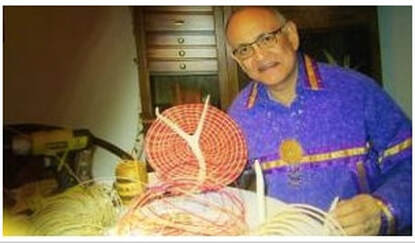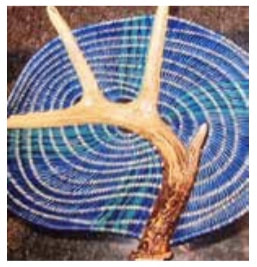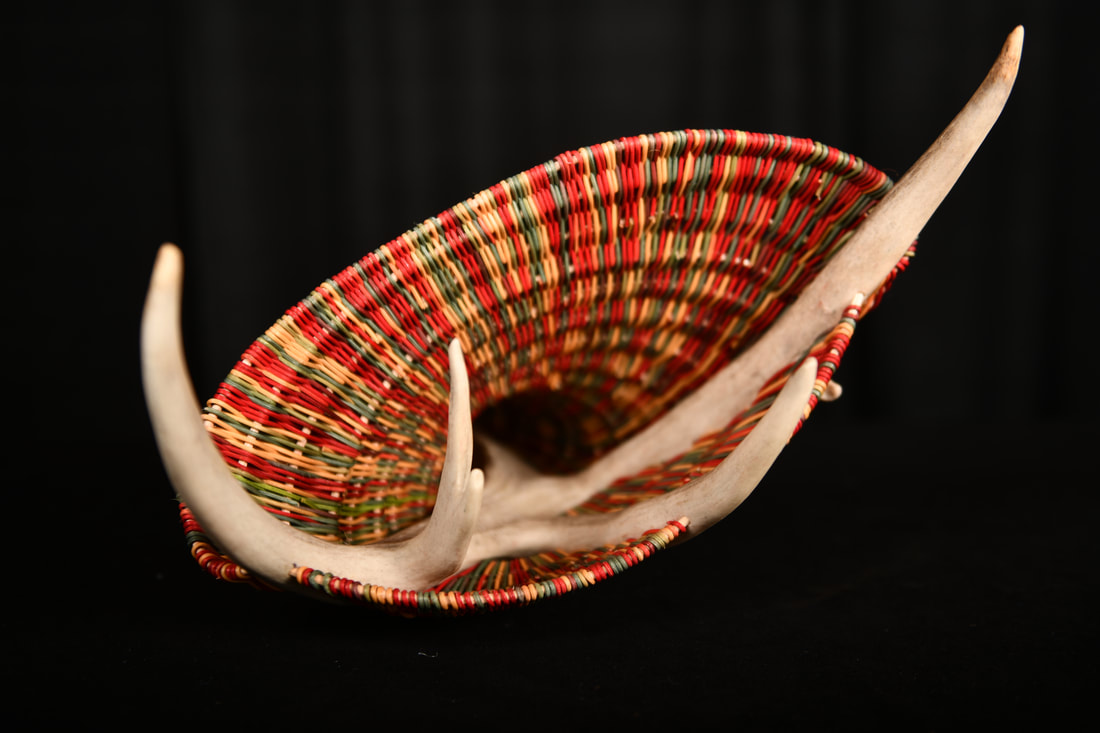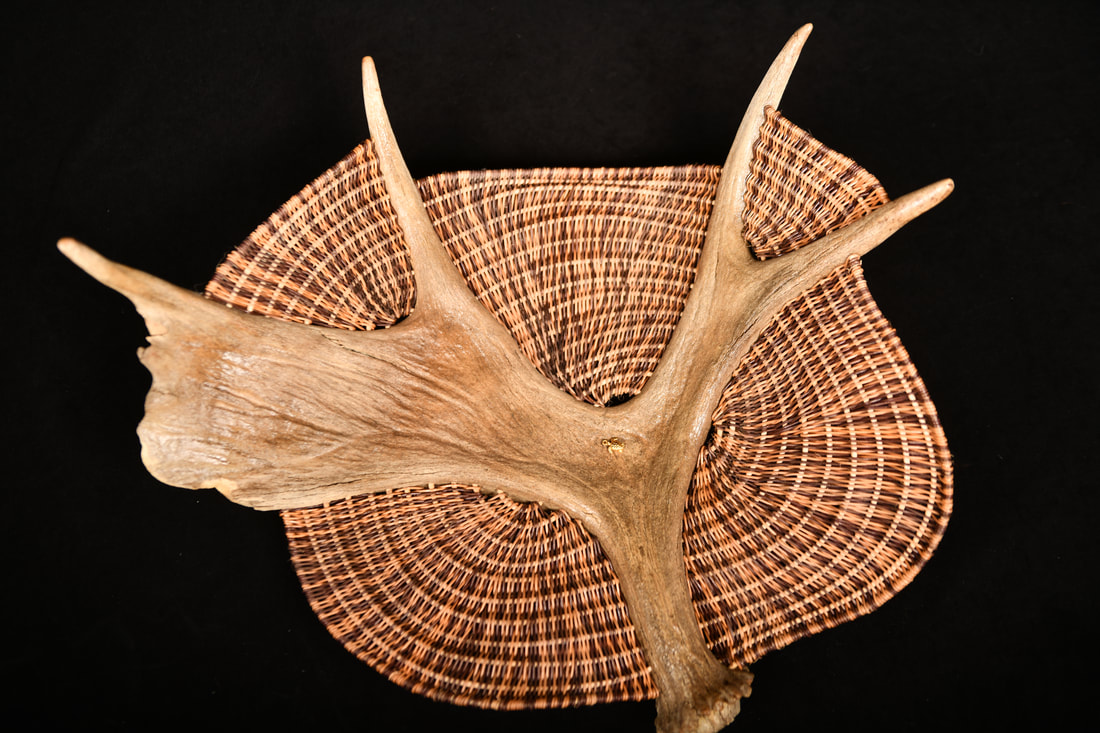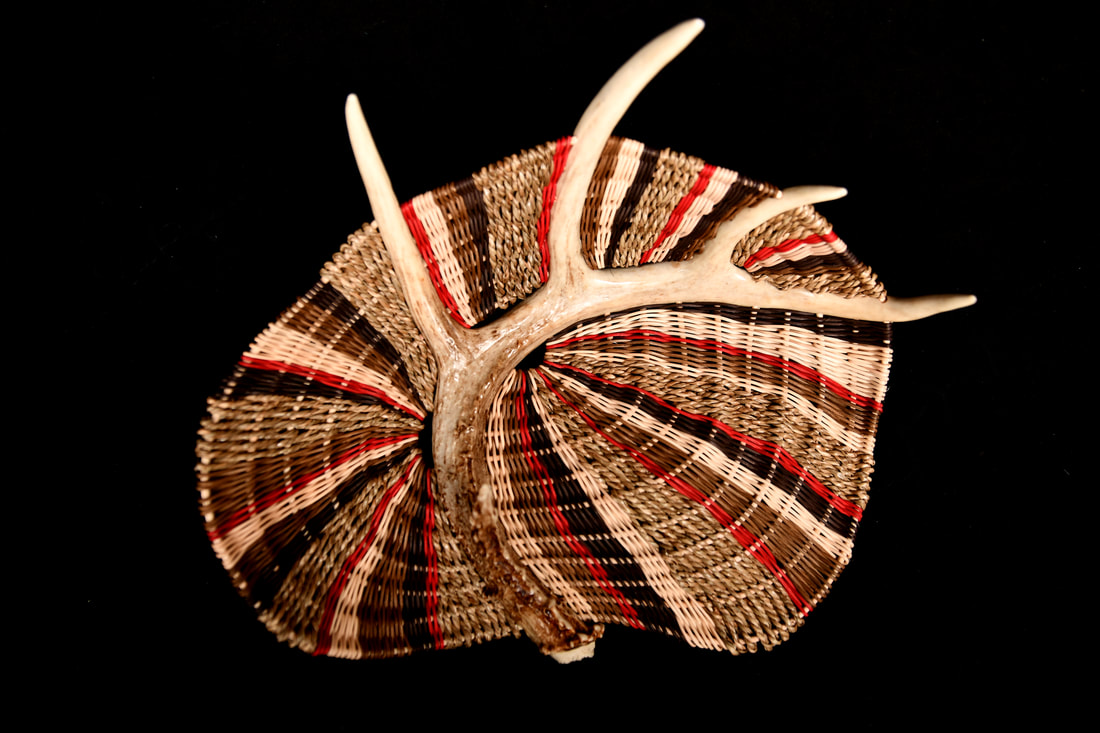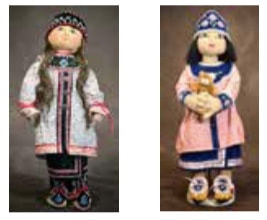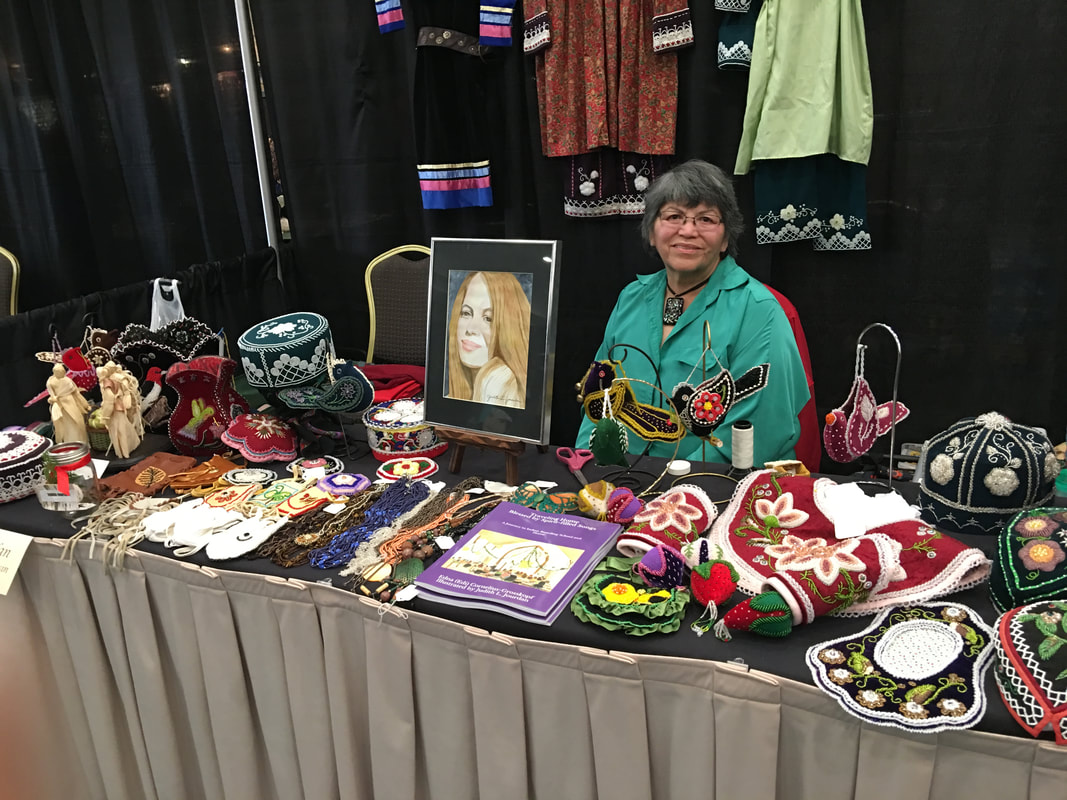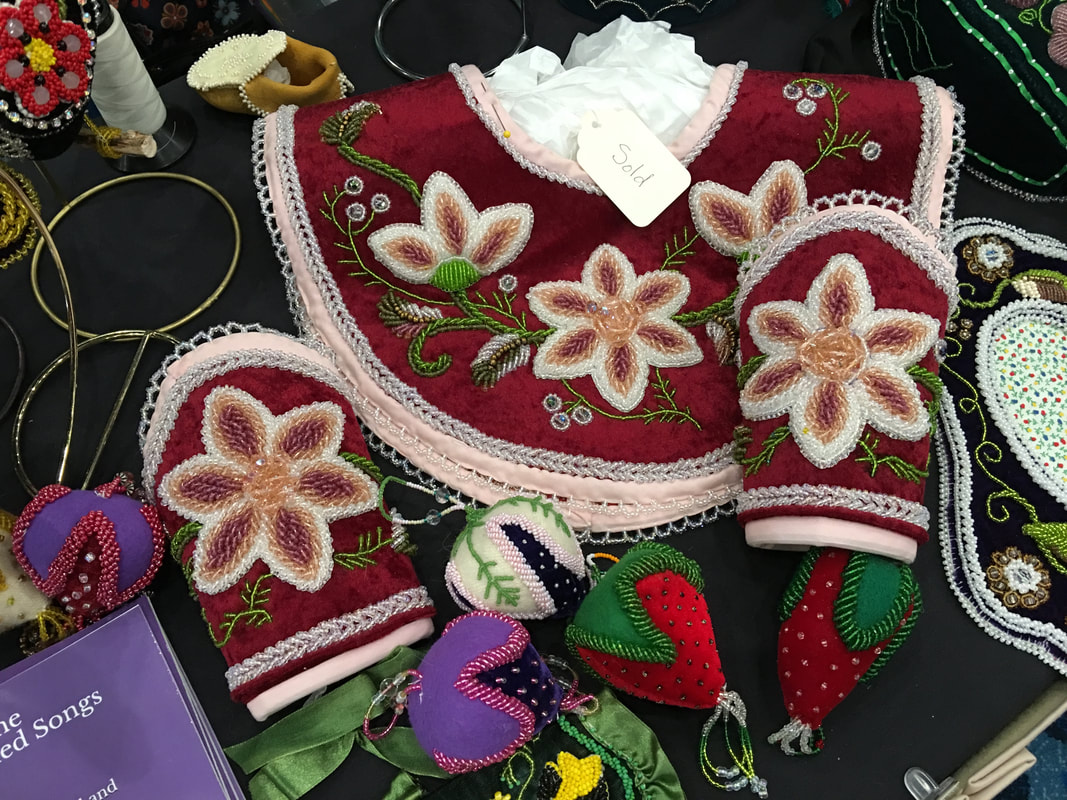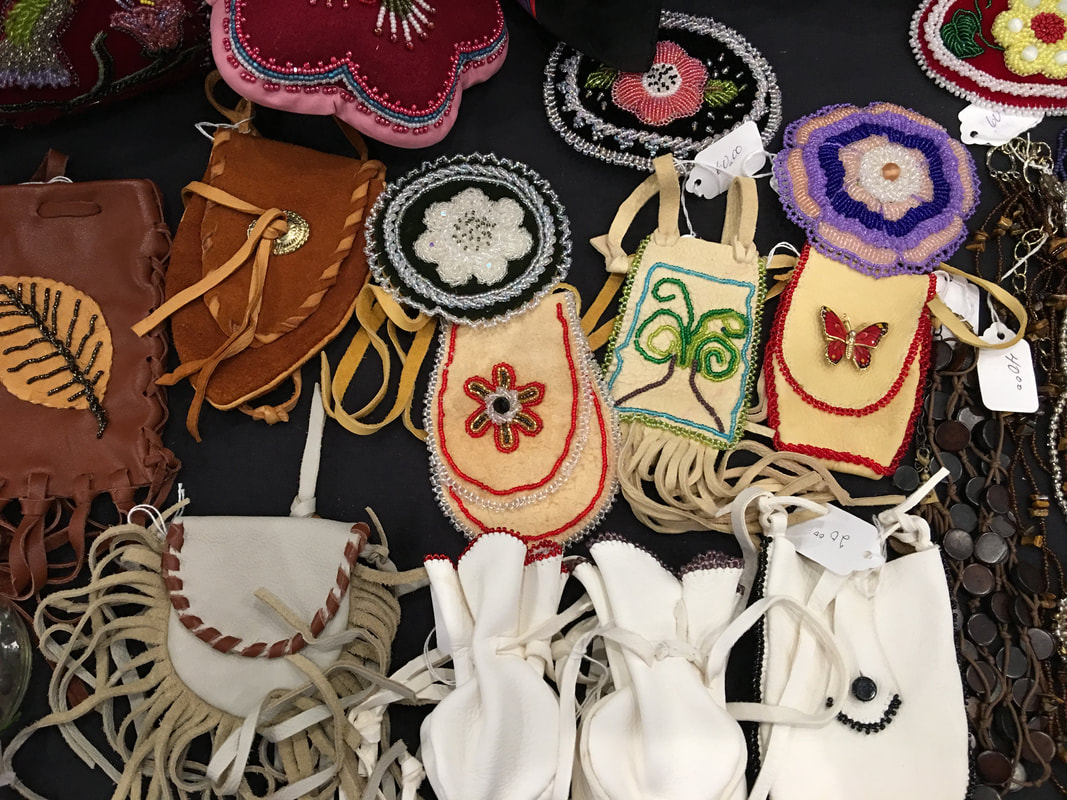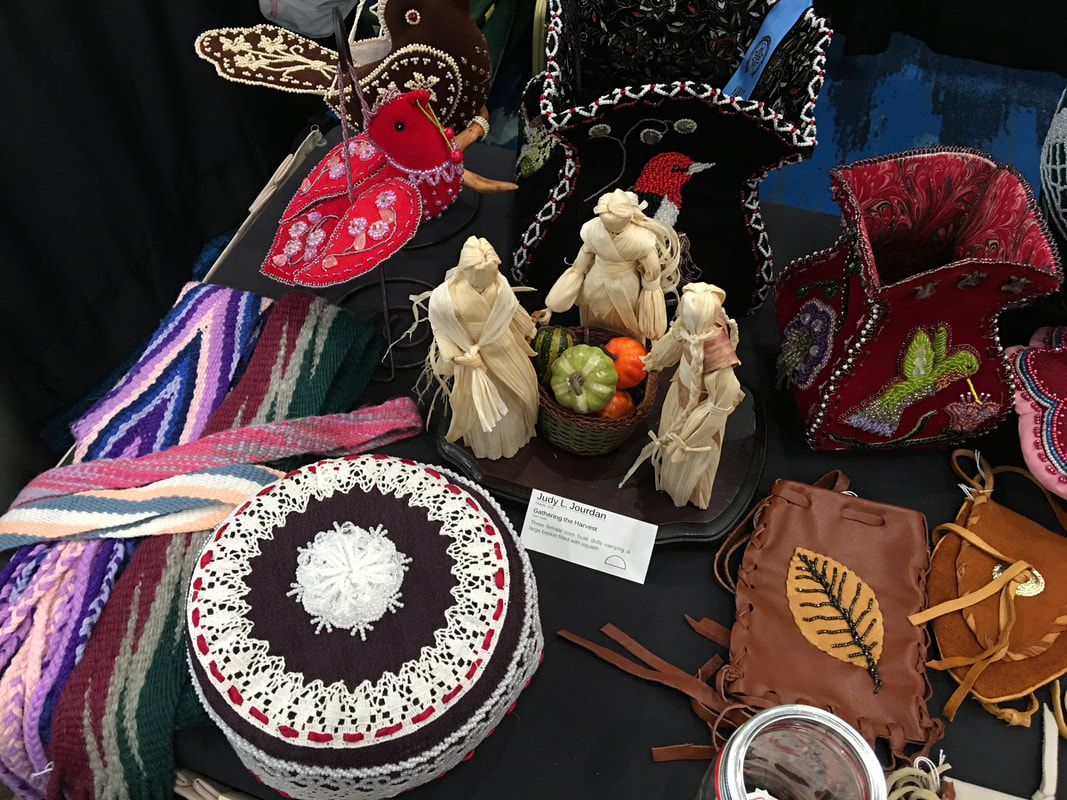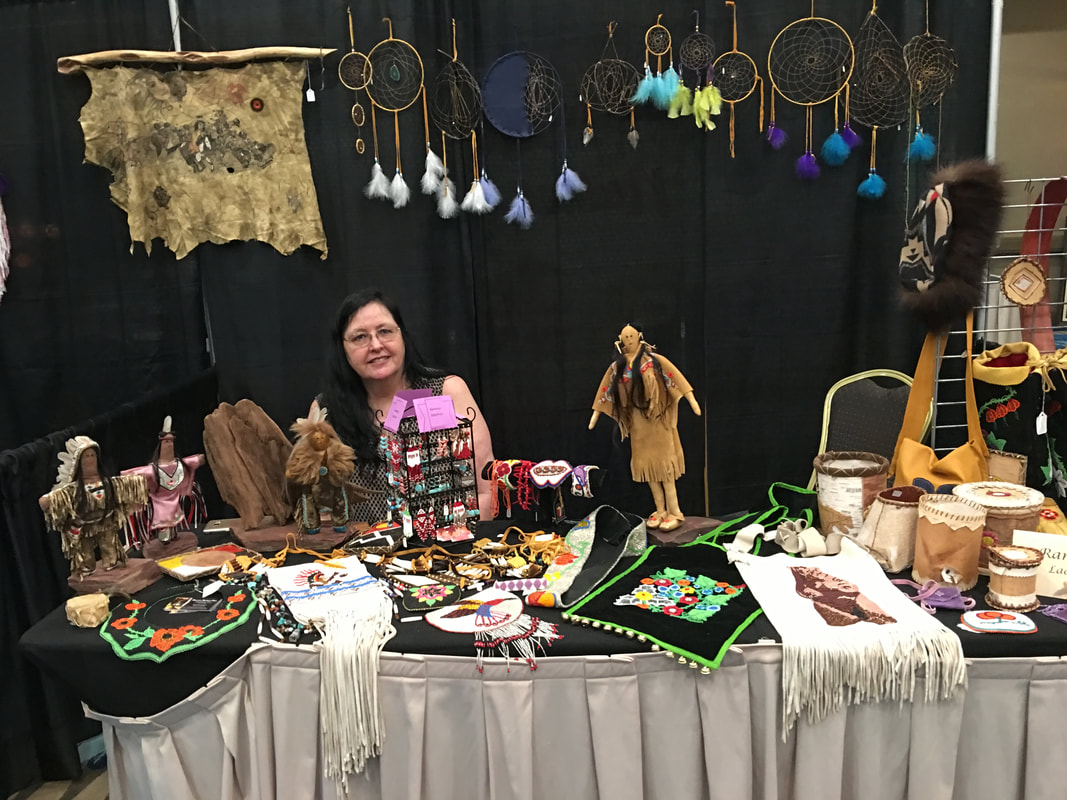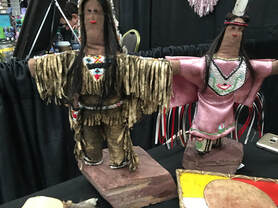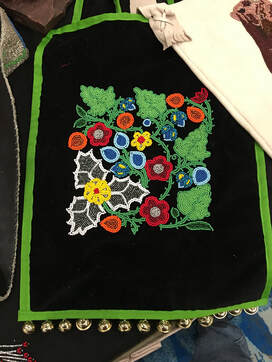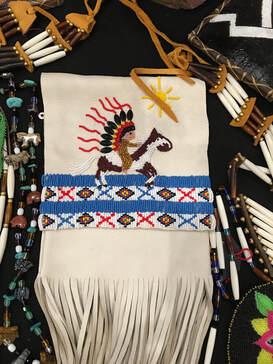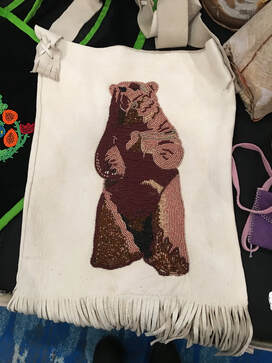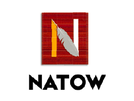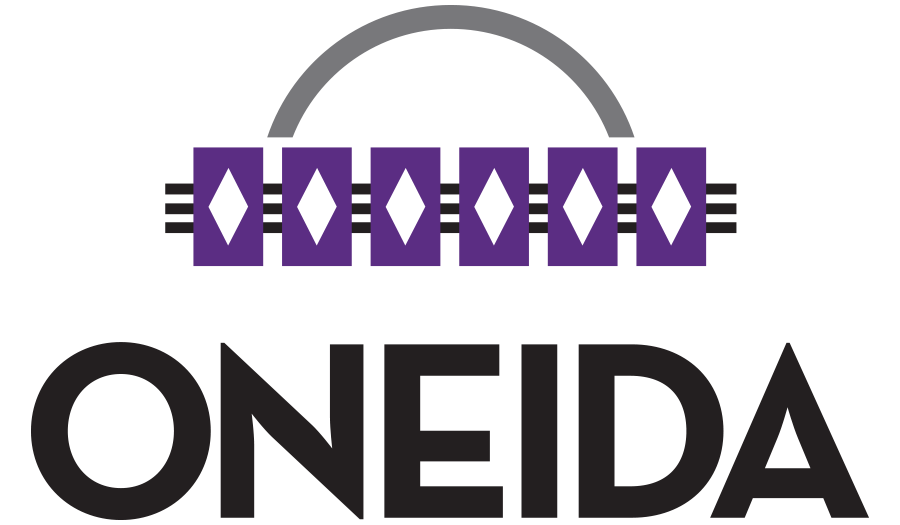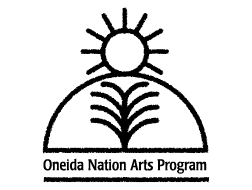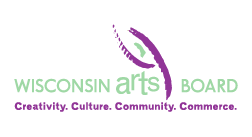|
Artist: Richard Gonzalez
(Oneida) |
Richard J., is a member of the Iroquois Confederation, Oneida Tribe, and Turtle Clan. His Oneida name is "Loliwyantati" which means, "He Who Brings the Good Word." Woven into each basket are symbols of his Iroquois culture. The antler represents Leadership, as a sachem, or chief, wore antlers in his headdress as a symbol of his position. The basket is round representing the Circle of Life. Purple, if used, connotes Peace and each basket contains a turtle as Native Americans refer to Mother Earth as Turtle Island.
Initially, the basket is dedicated to the concept of shared leadership. The leadership was shared between both the men and the women. As a symbol of a man becoming a "sachem" or chief, he wore two small antlers in his headdress or "gustoweh." The basket utilizes this symbol.
Our women were significant. They had the right to vote, owned the properties, had the right to impeach, and were the life givers of the next generations. They were political and spiritual advisors. Susan B. Anthony and other colonial women were very eager to learn about the beautiful role of Iroquois women as written and evidenced in a book, Sisters in Spirit, etc. Susan utilized this knowledge to advanced American suffrage. Also, see "Allies in War, Partners in Peace" at the Museum of the Native American in D.C. The chief or sachem is my seventh grandfather.
Centered in some baskets, is a real quahog shell. This is, also known as wampum. Notice the colors - purple and white. From the shell, beads were made and the beads created the belts which told our stories. Later, the color purple became associated with the concept of peace. The woven material - reed - also, purple further expresses peace.
"I refer to the basket as a smudging basket." Placed within the basket can be sage and/or sweet grass. Igniting the grass creates cleansing smoke that rises to the Spirit World. Taking a feather, the smoke is fanned towards oneself and to others in healing and cleansing. This is powerful. We waft it to oneself and others three times.
Each basket is "signed" with a metallic turtle. While being a member of the Iroquois, Oneida tribe, the artist is, also, a member of the Turtle Clan. The turtle is selected to be the artistic signature of the artist.
Initially, the basket is dedicated to the concept of shared leadership. The leadership was shared between both the men and the women. As a symbol of a man becoming a "sachem" or chief, he wore two small antlers in his headdress or "gustoweh." The basket utilizes this symbol.
Our women were significant. They had the right to vote, owned the properties, had the right to impeach, and were the life givers of the next generations. They were political and spiritual advisors. Susan B. Anthony and other colonial women were very eager to learn about the beautiful role of Iroquois women as written and evidenced in a book, Sisters in Spirit, etc. Susan utilized this knowledge to advanced American suffrage. Also, see "Allies in War, Partners in Peace" at the Museum of the Native American in D.C. The chief or sachem is my seventh grandfather.
Centered in some baskets, is a real quahog shell. This is, also known as wampum. Notice the colors - purple and white. From the shell, beads were made and the beads created the belts which told our stories. Later, the color purple became associated with the concept of peace. The woven material - reed - also, purple further expresses peace.
"I refer to the basket as a smudging basket." Placed within the basket can be sage and/or sweet grass. Igniting the grass creates cleansing smoke that rises to the Spirit World. Taking a feather, the smoke is fanned towards oneself and to others in healing and cleansing. This is powerful. We waft it to oneself and others three times.
Each basket is "signed" with a metallic turtle. While being a member of the Iroquois, Oneida tribe, the artist is, also, a member of the Turtle Clan. The turtle is selected to be the artistic signature of the artist.
Judith Jourdan has been an artist and dollmaker for over twenty years. She graduated from the Institute of American Indian Arts in Santa Fe, New Mexico, and received her B.A. from Lawrence University, Appleton, Wisconsin.
Judith uses a variety of materials such as corn husk, fabric, ceramic, porcelain, wire and wood to create her dolls. She uses what she needs to create the desired effect – even PVC pipe and rubber hose. Because of the mixture and type of materials, Judith refers to her work as doll sculptures.
Judith uses a variety of materials such as corn husk, fabric, ceramic, porcelain, wire and wood to create her dolls. She uses what she needs to create the desired effect – even PVC pipe and rubber hose. Because of the mixture and type of materials, Judith refers to her work as doll sculptures.
|
Artist: Ramona Morrow
(Lac Courte Oreilles Chippewa ) |
Historically, Native American Quillwork or Porcupine quilling is an ancient Native American art used particularly among East Coast and Plains tribes. Indian quillwork involved softening and dying stiff porcupine quills and weaving them onto leather or birchbark. Ramona taught a quillwork and baby moccasin class at the 2018 and 2019 Woodland Indian Art Show and Market.

